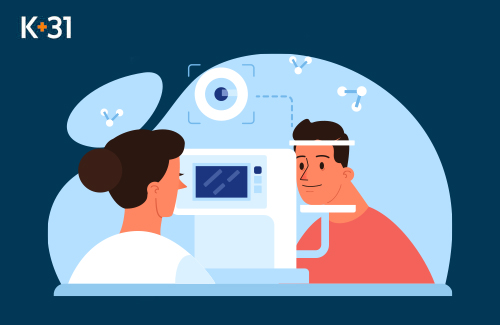Computer vision syndrome: is treatment required?

One of the recently diagnosed visual impairments is associated with the unconditional entry of electronic devices into our lives. A person spends more and more time at a computer, creating additional strain on the eyes. Constantly moving your gaze from the monitor screen to the keyboard and back can cause functional disorders in the eyeball, which is why CVC - computer vision syndrome - is being diagnosed more and more often today.
Risk factors
The image from paper and from the screen is perceived differently by the eye. Nature has arranged it in such a way that it is much easier for the eye to see pictures and text in reflected light, that is, applied to some surface (paper or keyboard) than to read from a screen where the image is:
- glows by itself;
- consists of discrete points;
- has no clear contours.
Hence the additional concentration, overstrain of the visual apparatus, which leads to a reduction in the frequency of blinking and less hydration of the cornea. The so-called “dry eye syndrome” develops. In addition, due to the spasm of accommodation that occurs due to constant changes in focus, visual acuity may decrease.
Risk factors for developing CVD may also include:
- uncomfortable body position when working at a computer;
- insufficient or excessive illumination of the workplace;
- incorrectly configured monitor technical parameters.
Office workers, freelancers, program developers and other professionals who spend more than two hours a day at the computer are most susceptible to this visual impairment.
Symptoms of CVD
The signs of computer vision syndrome are quite vague, and they also appear gradually, depending on the time spent in front of the screen. If it decreases, then the symptoms will gradually disappear.
But if the following phenomena occur:
- dry eyes, redness, burning;
- decreased visual acuity, fatigue, headaches;
- a feeling of “sand” in the eyes, increased tearing, especially in bright light;
- pain when moving the eyeballs, feeling of overexertion;
- dizziness, pain in the shoulders, neck, back, etc.
then, firstly, you should sit at the computer less, and, secondly, seek help from a doctor.
CHS in children
We should also talk about children. Does computer vision deteriorate if a child spends all his free time on it? This may very well be the case, because the children's visual system is at a stage of development, and such loads can be disastrous for it.
It is important to detect the appearance of a computer visual symptom in a child in time, which is not so easy. After all, children cannot always understand that they have vision problems. Parents should sound the alarm if:
- the child has constantly red eyes;
- he complains of burning, itching, and often rubs his eyes with his hands;
- gets tired quickly when reading or doing homework.
You should immediately limit the time he spends with a tablet in his hands, spend more time in the fresh air, play sports, and play outdoor games. And regularly visit an ophthalmologist, even if there is no obvious reason for this.
Prevention and treatment of CVD
Quite often people ask the question: if the computer hurts your eyes, then what should you do? First of all, you need to see a doctor ophthalmology clinic, which will give recommendations on how to get rid of eye discomfort and bring vision back to normal.
- If working on a computer is your main activity, apply the “20/20/20 rule” - work for 20 minutes, break for 20 seconds, look 20 feet (5-6 meters) into the distance. In this mode, the accommodative muscle can completely relax.
- Arrange your workplace according to all the rules:
- ergonomic chair, with a comfortable back and headrest;
- uniform lighting, without bright glare and flare;
- distance from the face to the monitor - at least 50 cm (depending on the diagonal of the screen);
- the keyboard is installed in such a way that the elbows are located approximately at the same level as the hands;
- Using special computer glasses will protect your eyes from blue light.
- Every hour, take 5-minute breaks to do some eye exercises, active blinking, or just look out the window at the distant future.
Even if you follow all the recommendations and rules, you can spend a total of no more than 6 hours a day at the computer. For excessive dry eyes, the doctor may recommend artificial tear preparations that replenish the lack of moisture and nutrition of the eye structures, primarily the cornea.
Computer vision syndrome is not a cause of the development of eye diseases, and if you follow the correct mode of working at the monitor, the unpleasant sensations will gradually disappear. But if this regime is violated, they will appear again.
